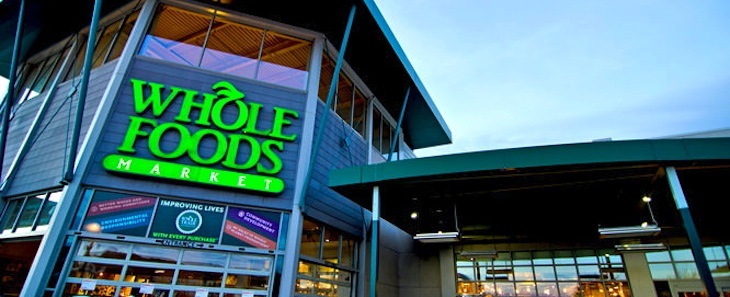Whole Foods expansion won’t include more 365 stores
by January 14, 2019 2:03 pm 443 views

Since Amazon acquired Whole Foods in 2017, the world has been watching closely to see how the e-commerce giant would use the grocery chain to expand its own food business.
Whole Foods CEO John Mackey announced recently the grocery chain will not open any more of its 365 stores, a banner with smaller stores and lower prices compared to the flagship Whole Foods.
Mackey told Yahoo! Finance the main reason for the strategy shift is lower pricing at Whole Foods Market.
“As we have been consistently lowering prices in our core Whole Foods Market stores over the past year, the price distinction between the two brands has become less relevant,” Mackey said. “As the company continues to focus on lowering prices over time, we believe that the price gap will further diminish.”
Whole Foods operates 12 of the smaller 365 stores and Mackey said all of them will remain open for business. Analysts with IGD recently noted as there is less distinction between Whole Foods Market and its 365 formats, it raises the question if these stores will remain a separate format.
IGD said these 365 stores have no doubt influenced the traditional formats recently built and those expected in the future. Whole Foods is reportedly planning to expand its store count in the U.S. reviewing sites around 45,000 square feet which IGD said is close to the retailer’s optimum footprint before acquired by Amazon in 2017. After the Amazon acquisition focus was changed to pricing and e-commerce, underpinned by the Amazon Prime program, IGD notes.
“This has become the default loyalty program at Whole Foods Market,” IGD noted in a recent company blog. “Prime Now delivery, and recently the initial roll-out of Prime Pickup, have been the most impactful additions. With the roll-out of the delivery program almost complete, the retailer will focus on developing its store pickup program this year. Building a broader store network would enhance Amazon’s capabilities in this area; with just under 500 stores in the US, there is significant scope to extend the reach of its grocery e-commerce programs.”
Analysts with IGD said they expect to see some key changes within the grocery e-commerce service at Whole Foods Market with a wider range of produce being offered. That strategy could include adding more national brands to its natural and organic product mixes.
“While this is unlikely to change for in-store shopping, through Amazon, the retailer could make these items available for delivery or pickup by using surplus space at store level or developing larger footprints. This would ensure that the core customer proposition remains intact while also meeting more of its customers’ core grocery needs,” IGD said.
Prior to the Amazon ownership, Whole Foods had been opening between 50 to 60 stores a year in 2015, but that pace slowed in late 2016. The Austin-based grocery chain recently said it has looked at some vacated retail spaces by Kmart and Sears as it scouts for new potential store locations that meet all the retailer’s criteria.
